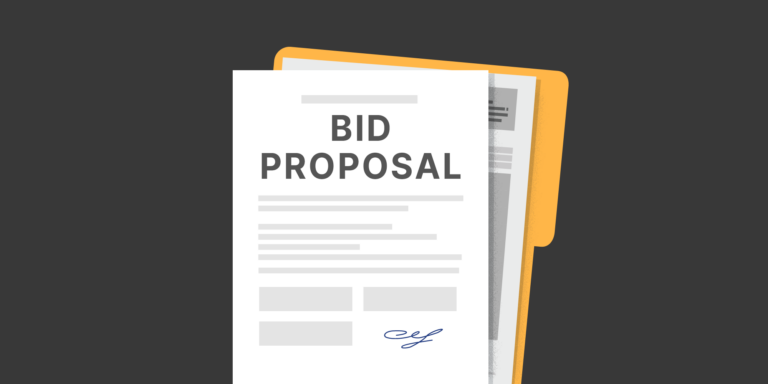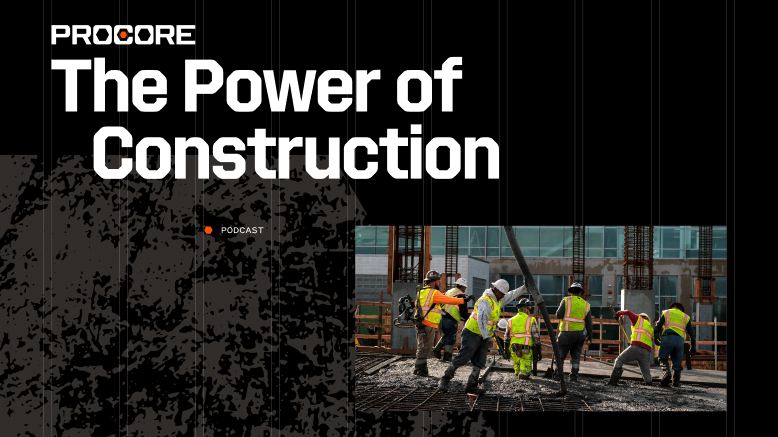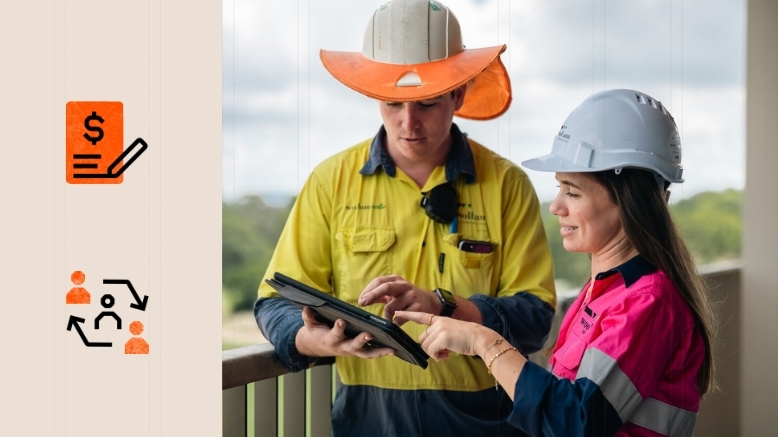— 8 min read
Construction Bid Proposals: The Paperwork for Landing Work


Last Updated Apr 30, 2024

Bianca Holtier Coury
Education Audience Marketing
19 articles
Bianca Holtier Coury spent 15+ years in various roles managing construction projects, such as Preconstruction Team Lead, Purchasing Agent, and Project Manager. She has a wealth of experience in all project phases, including managing project schedules and budgets, bid management, and coordinating vendors and subcontractors. Bianca is an Associate Member of AIA and a LEED Green Associate. She currently serves as Director of Partnerships for the Construction Progress Coalition. Bianca holds a BA in Urban Design and Architecture Studies from NYU. She lives in Cleveland, OH.

Kacie Goff
Contributing Writer
91 articles
Kacie Goff is a construction writer who grew up in a construction family — her dad owned a concrete company. Over the last decade, she’s blended that experience with her writing expertise to create content for the Construction Progress Coalition, Newsweek, CNET, and others. She founded and runs her own agency, Jot Content, from her home in Ventura, California.
Last Updated Apr 30, 2024

In the diverse world of architecture, engineering, and construction (AEC), professionals all share one goal: finding customers who will pay for their services. Bid proposals offer the most commonly used path to landing projects.
During the construction bidding process, companies submit documentation explaining what they can do on the jobsite in question. An entity then evaluates any bids that get submitted and chooses to award the contract to specific parties. On average, construction professionals land roughly one job for every five they bid. Since this is a numbers game, many people want to increase their odds using tools like bid writing best practices or a construction bid proposal template. Before exploring those, though, it’s helpful to get a better understanding of bid proposals in general.
In this article, we will delve into what bid proposals are, how they work and some best practices for proposing bids in the construction industry.
Table of contents
What is a bid proposal?
A construction bid proposal is a document submitted by either an individual (e.g., an electrical contractor operating as a sole proprietor) or a company explaining the work they can complete, the price for which that work can be completed and the expected timeline for completion. Usually, bid proposals get submitted in response to an invitation to bid from the project owner or the entity in charge of hiring out the trades, like the GC running the project.
To provide a construction bid proposal example, say that a project requires drywall. Various drywall contractors might respond to an ITB with bid proposals explaining how much it will cost and how long it will take for their team to install drywall based on the required square footage.
These responses often use a construction bid proposal template. To respond to the bid, the drywall pros just need to fill out the bid form they were given.
Defining Terms
The language can get a little tricky here. For starters, some differentiate “bid” and “proposal.” In some cases, bid refers to a document outlining the potential cost and scheduling of labor and materials, while proposals might be more detailed and leave space to explain what sets a company apart. That said, what some companies call a bid others might call a proposal, or a bid proposal.
To make matters even more complicated, a construction team might submit a bid in response to any of the following:
Bid proposals returned in response to an ITB or RFQ may be more numbers-focused. Bid proposals submitted for RFPs might give the contractor an opportunity to submit information on their approach as well as their pricing and scheduling.
Construction pros could spend hours debating the semantics here. For the purposes of this conversation — and for simplicity’s sake — bid proposals are what contractors and subcontractors submit in response to any invitation from another party to bid on a project.
How does the bidding process work?
The way the bidding process works heavily depends on the project delivery method.
If the project is using a design-bid-build method, for example, the project owner works with one firm to develop the design, then solicits bids from general contractors (GCs) who will manage the construction based on that design. Once the owner chooses a GC for the project, that GC generally sends out an ITB for any specialty contractors they’ll need to fulfill the contract.
With a Design-Build method, the same firm develops the design and handles the construction, which usually means opening up an ITB for subcontractors.
With construction management multi-prime projects (CMMP) projects, the owner maintains control over the entire project and is the one to open the ITB and choose subcontractors.
Clearly, the details surrounding a bid proposal can vary quite a bit depending on the project. For general contractors and specialty contractors, though, the focus is often not on what happens before the ITB. Instead, they engage once that invitation goes out.
Getting an Invitation to Bid
Some projects — usually government-funded — open up the invitation to bid to everyone (i.e., open tendering). You can usually find these ITBs on the government agency’s website and builder’s exchanges.
Learn more about bidding on government construction projects.
Other projects only accept bid proposals from a prequalified list of construction professionals (i.e., selective tendering). Some GC firms even maintain a form on their website allowing subcontractors to join their network. With this prequalification, they might be invited to bid on future projects managed by that GC.
Companies and individuals who are invited to bid might get an email notification or an alert in a software solution that the bid package has been sent out. That bid package details the project, enabling contractors to accurately bid on it. Usually, that package gets released once the construction drawings are at least 90% complete.
Once the “construction drawings have hit the streets,” meaning the project is open for bid proposals, contractors rush into action to return their bid by the deadline. Usually, they have 30–45 days to submit their bid.
Who responds to the invitation for bid?
Sole proprietors fill out the construction bid proposal template or other bidding documentation themselves. Larger firms usually have a team or specific person designated to respond to the ITB. Some job titles involved in responding to bid proposal invitations include:
- Purchasing agents
- Preconstruction team lead
- Directors of preconstruction
- Chief estimators
What to Include in a Bid Proposal
In a lot of cases, the ITB provides guidelines for bid proposals. Contractors may even get a form to fill out, giving them a construction bid proposal template so they simply need to fill in the blanks.
Bid proposals usually include:
- The scope of work
- Existing conditions (if the contractor conducted a preliminary site assessment)
- Detailed cost estimates
- The proposed work schedule
- Terms and conditions (e.g., payment terms)
- How the contractor will fulfill the project’s bid security requirements (e.g., a bid bond)
- A notes section, where contractors can input additional information, like their history with similar projects or testimonials from happy customers
To see more detail, a quick internet search for “construction bid proposal example” will yield a variety of results. Alternatively, the American Society of Civil Engineers offers a construction bid proposal template — but it requires payment for download.
Next Steps
Once the bid deadline passes, the appropriate party (e.g., owner, GC) starts bid leveling. Essentially, this allows them to compare apples to apples as they evaluate the bids that were submitted.
Then, based on the collected bid proposals, they decide who to award the contract for the project.
On a government project, regulation might require that the contract gets awarded to the lowest bidder. Commercial projects are often price-oriented, too, but the award of the contract may hinge on additional factors, like the contractor’s safety certifications or track record in similar projects. In residential construction, it’s fairly common for contracts to get awarded to groups that have already worked with the GC or owner in the past.
In some cases, and particularly with larger-scale projects, the owner or GC will hold pre-award meetings before deciding who gets the contract. These could be individual meetings, inviting bidders to come to the site to evaluate it and ask questions about the scope of work, or a bidder’s hall forum, where all bidders gather to ask questions.
Ultimately, though, a decision gets made and one of the bidders emerges on top — with a contract for the project to show for it.
Best Practices When Responding to an Invitation to Bid
Bid proposals provide construction professionals with a path to get work. To increase the likelihood of getting awarded a contract when submitting a bid, contractors should do the following.
Review the project documents closely.
Just because a contractor is invited to bid doesn’t necessarily mean they should submit a bid proposal. Creating bid proposals requires team members’ time and focus. As a result, companies should only allocate those resources to the bid when the project falls within their wheelhouse.
Evaluate the site (if it’s an option).
When the owner or GC allows for it, walking the jobsite can ensure that the bid proposal accurately reflects the work needed on that specific project.
Follow the provided formatting.
This shows a willingness to cooperate. If the ITB didn’t include a construction bid proposal template, contractors can still follow the formatting by submitting their bid in the same format in which they received the ITB (such as a hard copy, a PDF attached to an email or via a specific software).
Include payment terms.
Many project owners and GCs aren’t prepared to dole out one lump sum payment. Including payment terms, like an outline of milestones and how much payment is expected at each, can help bid proposals stand out from the crowd.
Use the notes section.
This offers an opportunity to spotlight selling points, like safety certificates, credentials, warranties the firm offers, highly skilled team members who will be involved in the project, and testimonials from past clients.
Proofread before submitting.
Pulling together a bid proposal usually requires a considerable amount of time and effort. But one small error can make the pricing look unreasonable or the schedule untenable. Careful proofreading before submitting the bid helps to defend against these types of issues.
Ideally, the ITB lays out the required information so those invited to submit bid proposals know what to send. For any murky areas, though, the best practice is to approach the group collecting bids and ask clarifying questions.
Was this article helpful?
Thank you for your submission.
100%
0%
You voted that this article was . Was this a mistake? If so, change your vote
Scroll less, learn more about construction.
Subscribe to The Blueprint, Procore’s construction newsletter, to get content from industry experts delivered straight to your inbox.
By clicking this button, you agree to our Privacy Notice and Terms of Service.
Thank you!
You’re signed up to receive The Blueprint newsletter from Procore. You can unsubscribe at any time.
Categories:
Written by

Bianca Holtier Coury
Education Audience Marketing | Autodesk
19 articles
Bianca Holtier Coury spent 15+ years in various roles managing construction projects, such as Preconstruction Team Lead, Purchasing Agent, and Project Manager. She has a wealth of experience in all project phases, including managing project schedules and budgets, bid management, and coordinating vendors and subcontractors. Bianca is an Associate Member of AIA and a LEED Green Associate. She currently serves as Director of Partnerships for the Construction Progress Coalition. Bianca holds a BA in Urban Design and Architecture Studies from NYU. She lives in Cleveland, OH.
View profile
Kacie Goff
Contributing Writer | Procore Technologies
91 articles
Kacie Goff is a construction writer who grew up in a construction family — her dad owned a concrete company. Over the last decade, she’s blended that experience with her writing expertise to create content for the Construction Progress Coalition, Newsweek, CNET, and others. She founded and runs her own agency, Jot Content, from her home in Ventura, California.
View profileExplore more helpful resources

What Happens When Data Drives the Business?
Construction has long been seen as a low-margin industry. But what if the real problem isn’t the margins—it’s how decisions get made? In episode 17 of The Power of Construction,...

Vet Contractors with Confidence: A Guide to Smart Bidder Selection
Selecting the right bidder is one of the most consequential decisions a construction team makes — yet it often happens under tight deadlines, with limited visibility into the long-term implications....

The Construction Bid Interview & Follow-up: Closing the Deal
During construction project bidding, the interview is often the last part of the request for proposal (RFP) process and one of the most influential. For teams that advance to the...
Construction Business Development: Tracking and Winning the Right Opportunities
Construction business development isn’t just a response to deadlines: It’s a long-term strategy rooted in focus, visibility and timing. Delays, funding gaps and market pressure have made it harder to...
Free Tools
Calculators
Use our calculators to estimate the cost of construction materials for your next project.
Templates
Find a template to help you with your construction project tasks.
Material Price Tracker
Get the latest U.S. retail prices and view historical trends for common building materials.
Glossary
Explore key terms and phrases used in the industry.
